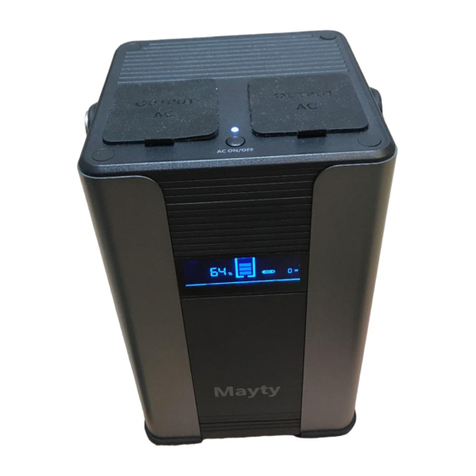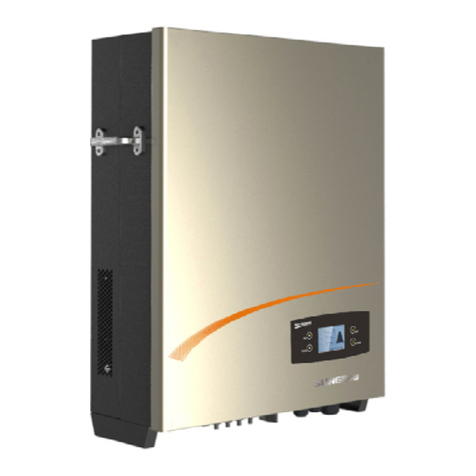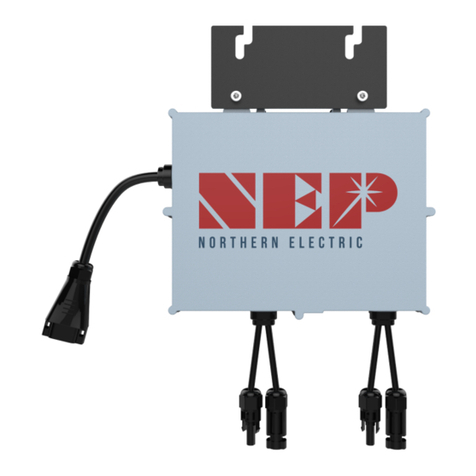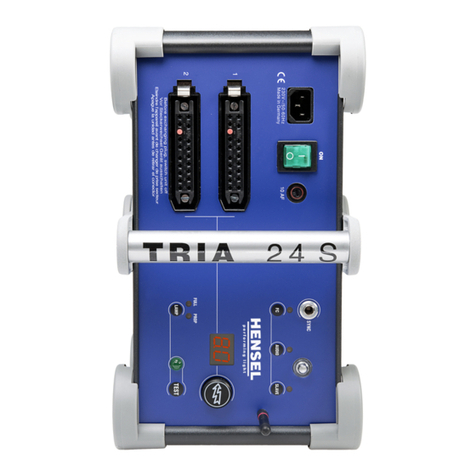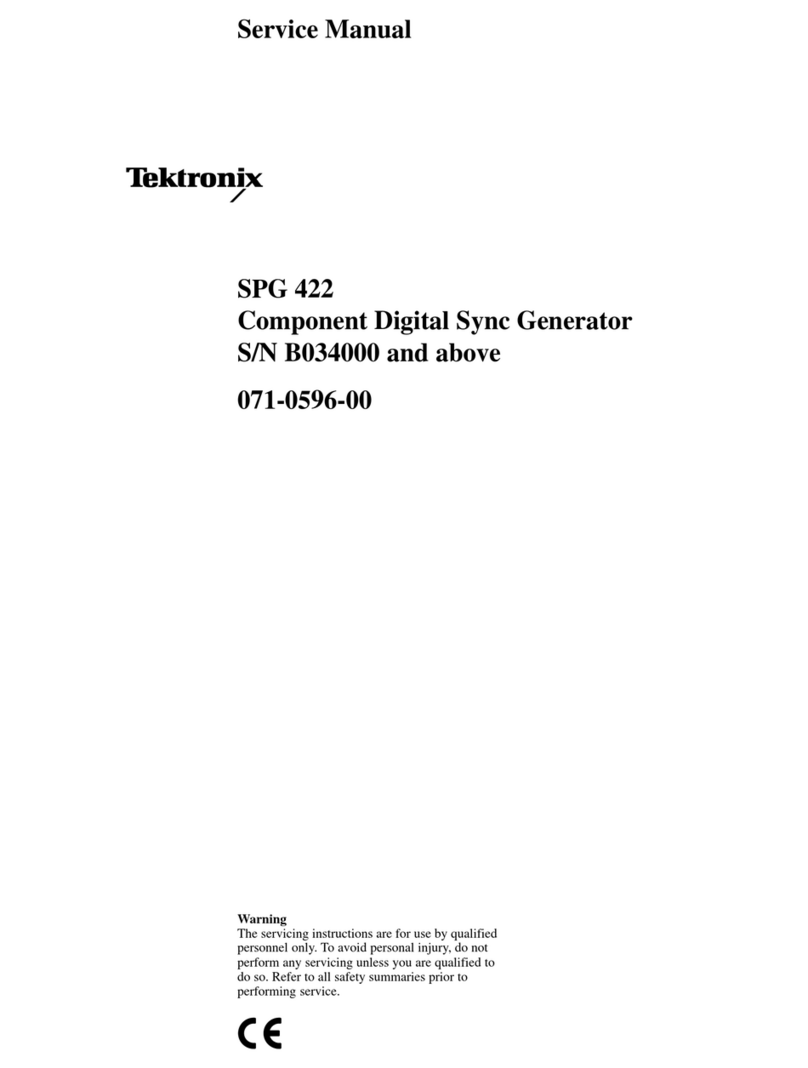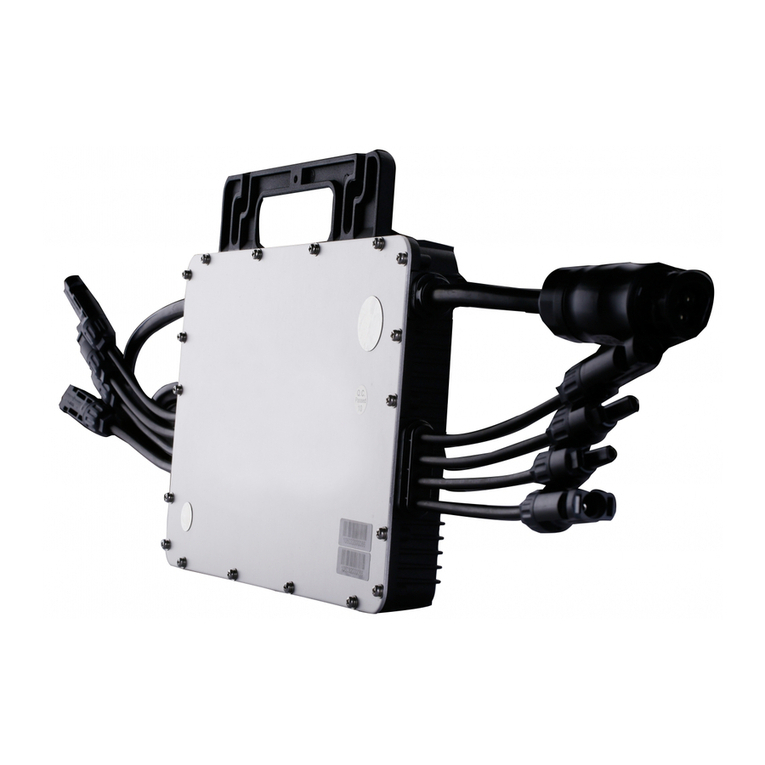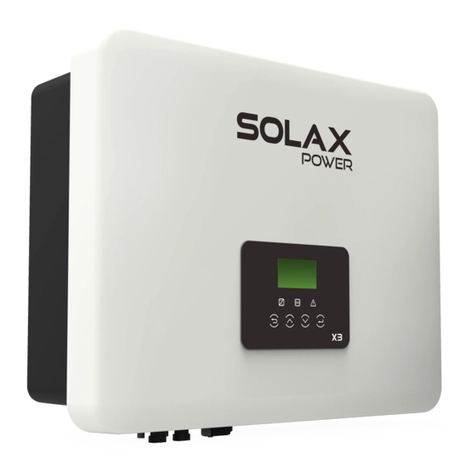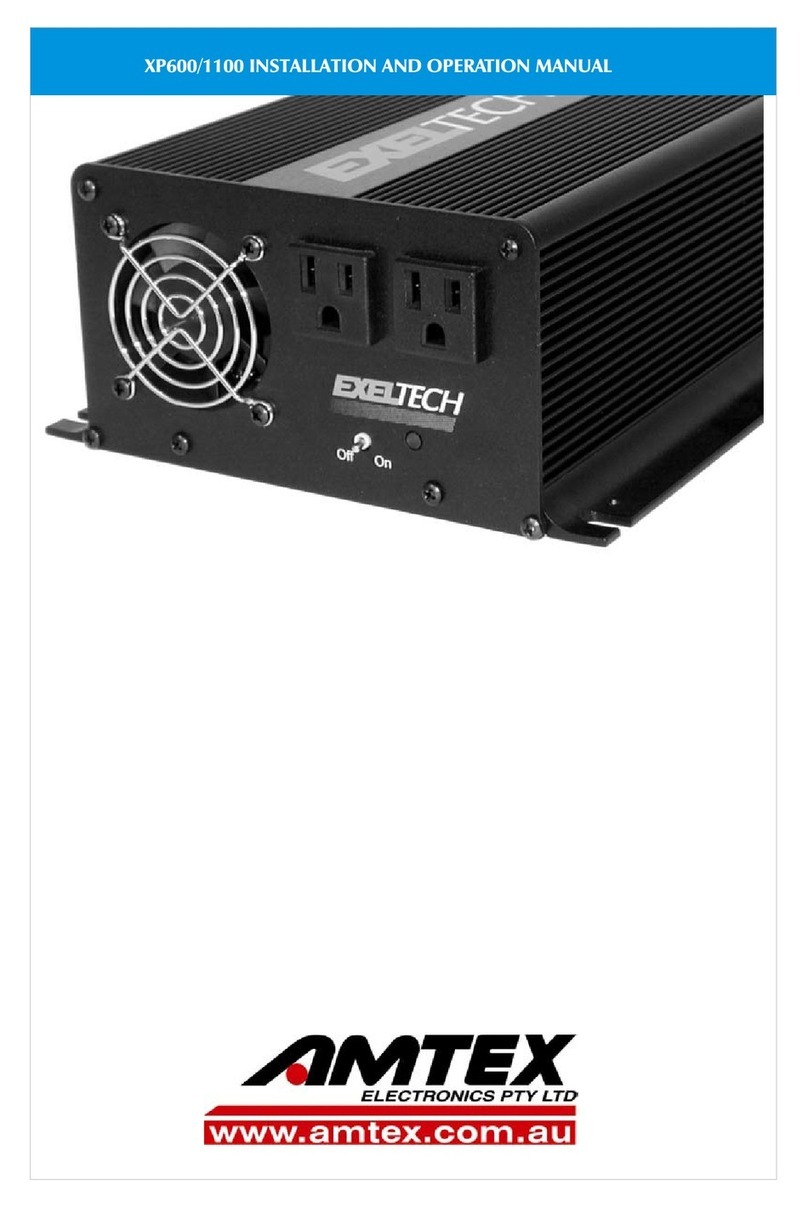Grant AS 1.0 Assembly Instructions

Grant Grid-Connected Inverter
For Grant Solar PV Systems
Installation & User Instructions
Doc. 92. Rev. 00 August 2010
PROVISIONAL COPY

2
Contents
Contents
1Introduction &
General Requirements 3
1.1 Installation Requirements 3
1.2 Signs used in this manual 3
1.3 Safety instructions 3
1.4 Disposal information 3
2Product information 4
2.1 Product description 4
2.2 Technical specification 5
3System Design 6
3.1 Guidance 6
4Installation 7
4.1 Siting 7
4.2 Mounting 8
4.3 Electrical wiring 9
4.4 Energising the system 10
4.5 De-energising the system 10
5Inverter Display and Indicators 11
5.1 ED indicators 11
5.2 CD panel 11
5.3 Normal operation 12
5.4 System operating modes 13
5.5 Fault displays 14
5.6 Power generation data 15
6Fault Finding 16
6.1 Grid volt error 16
6.2 TVS/Over power 16
6.3 DC supply issue 16
6.4 Inverter defect 16
7Warranty information 17
7.1 Grant Grid Connected Inverter Warranty 17
8Notes 18/19

1 Introduction & General Requirements
1.1 Installation Requirements
Thank you for purchasing a Grant grid-
connected Inverter from our Solar PV
Range. This installation manual must be
read carefully before you begin installing
the inverter.
This inverter must be installed by a
competent person in compliance with
all current legislation, codes of practice
and local by-laws covering the
installation of electrical equipment.
Please also make sure that any
installation complies with the
instructions contained in this installation
instruction manual.
1.2 Signs used in this manual
WARNING - This sign
indicates that the
following instructions
must be read and
complied with. Failure to
do so may result in Fire,
Injury and death.
CAUTION - This sign
indicates that the
following instructions
must be read and
complied with. Failure to
do so may result in
damage to property.
1.3 Safety instructions
All electrical installations must be
carried out in accordance with the
Electricity at Work Regulations 1989
and BS. 7671:2008 – IEE Wiring
Regulations 17th Edition (including any
amendments).
Isolate and disconnect both the AC
and the DC connections to this inverter
before commencing any maintenance.
High power capacitors inside the
inverter may be storing high voltages
even with the AC/DC connections
isolated.
The inverter must be mounted onto a
solid fire resistant wall. The inverter
weighs between 22.5 and 42.5kg
(depending on the model) and will
require two people to lift it into position.
Do not touch any part of the inverter
whilst in operation as the casing
temperature may exceed 60ºC.
Do not disconnect the AC or the DC
plugs from the inverter unless power
has been removed from both the AC
and DC sides. Doing so will damage
the inverter and may result in
electrocution.
Introduction &
General Requirements
3
Please leave this manual with the householder after installation.
1.4 Disposal information
Waste Electrical
and Electronic
Equipment (WEEE)
& Restriction of
the Use of Certain
Hazardous
Substances in
Electrical and
Electronic Equipment (RoHS) Directives.
The Waste Electrical and Electronic
Equipment Directive (WEEE) is an EU
initiative to protect the environment by
reducing the amount of electrical
equipment including PCs, servers,
printers, laptops and other electrical
products going into landfill sites.
This product is classed as Electrical
and Electronic Equipment (EEE) and
should not be disposed of with your
general waste.

2 Product Information
roduct
Information
4
2.1 roduct Description
The Grant range of PV grid-connected
inverters are designed for small to
medium power grid-connected PV
generation systems.
Features of the Grant inverter range
include:
* Sealed stainless steel enclosure
designed and certified for IP65
protection.
* Isolation transformer for safety and
reliability without compromising
conversion efficiency
* Plug-in connections for AC , DC and
communication (optional accessory)
cables.
* Power size and input voltage range for
each input MPPT channel
* Transient voltage suppressor at both
input and output terminals to protect
the inverter from transient high voltages
induced by lightening or other sources.

roduct
Information
5
2.2 Technical Specification

System
Design
6
3 System Design
3.1 Guidance
Incorrect system design could cause
damage to the inverter.
Non-optimal design will lower the
efficiency of the system and waste
inverter power capacity.
A guide matrix is provided below for
each inverter model when using the
Grant GPV180M Solar PV modules.
CAUTION:
On no account must
these values be
exceeded.

Installation
7
4 Installation
4.1 Siting
The Grant range of inverters can be
installed either indoors or outdoors.
When siting the inverter, ensure that:
1) Sunlight cannot fall directly onto the
inverter enclosure.
2) The inverter is installed on a concrete
or brick wall.
3) The wall will not have a tilt angle
greater than 30º.
The inverter should be mounted a
minimum of 1.2m from ground level.
There must be a minimum space of
500mm above the top of the inverter
and 200mm on both sides – Figure 1.
CAUTION:
Do not install the
inverter in an explosive
or flammable
environment.
The site of the
installation will be dry,
clean from dust and
sufficient room to allow
free air to circulate.
CAUTION:
The site of the
installation should not
be an area that is in
constant use by people
or animals.
Do not touch the
enclosure while the
inverter is in operation.
The temperature of the
casing may exceed
60ºC. Risk of burns.
WARNING:
The inverter m st not be
covered or partially
covered at any time, d e
to risk of fire!
Figure 1: Clearances around inverter, viewed
from the front.

Installation
8
4 Installation continued...
WARNING:
The inverter m st not be
installed on a flamable
s rface, d e to risk of
fire!
4.2 Mounting
Using the two holes on the mounting
bracket as a guide, mark and drill two
12mm holes.
Assemble the expansion bolt set as
shown in Figure 2, and secure the
mounting plate to the wall.
ift the inverter (with two people) and
hang on the top edge of the mounting
plate.
Fix the positioning bolt to the bottom
hole of the mounting bracket.
Fasten the positioning bolt under the
inverter. See Figure 3
1) Mounting Bracket
2) Nut
3) Spring washer
4) Flat washer
5) Expansion tube
6) Bolt
Figure 2: Bolt Assembly
Figure 3: Bolt Positioning

Installation
9
4.3 Electrical wiring
Before connecting the AC and DC
cables to the inverter, check the data
plate on the inverter matches the
installation requirements for both AC
and DC. (Voltage, power, frequency,
etc). Failure to do so could damage
the inverter or cause a malfunction
during operation.
The Grant range of inverters are
designed only for Solar PV Grid-
Connected installations only. It is
forbidden to connect this inverter to a
public DC network or an island (battery)
system.
Only Grant Solar PV modules
(GPV180M) are permitted to be fitted to
this inverter. Do not connect any other
type of DC generating device to this
inverter.
DC CONNECTION
The length of the cable between the PV
array and the inverter should not
exceed 10m. This includes any DC
isolators that are fitted between the
array and the inverter.
onger cables could lower the overall
system efficiency and could cause
electromagnetic interference.
* The inverter uses a MC Type4 DC
plug and socket for connecting the PV
array cables.
* The cross section of the cable must
not be less than 4mm².
* The DC array cable must be rated for
1000VDC
A C CONNECTION
The flex used for each inverter is as
follows:
* For Grant AS1.0 and AS1.5 inverters,
heat resistant 1.5mm² flex must be
used.
* For AS2.0 and AS3.0 inverters, heat
resistant 2.5mm² flex must be used.
The connection of the wires to the AC
plug is shown on Figure 4.
Figure 4: AC Plug Wiring diagram

Installation
10
4.5 De-energising the system
Irrespective what condition the inverter
is in, carry out the following instructions
In the order they appear to safely
isolate the inverter.
Turn off and lock off the DC isolator(s).
Turn off and lock off the AC isolator(s).
If maintenance on the DC side is
required, disconnect the DC MC Type4
plugs from the inverter. If maintenance
on the AC side of the inverter is
required, disconnect the DC MC Type4
plugs and then disconnect the AC plug
from the inverter.
4.4 Energising the system
CAUTION
Check that the voltage of
the completed PV string
does not exceed 400V and
note the polarity of the
MC4 connectors is correct.
Check the AC isolator(s)
are in the ‘off’ position and
that there is no power
being supplied to the
inverter.
Connect the AC plug to the inverter and
screw the securing ring hand tight. Isolate
the DC isolator(s). Connect the MC Type4
connecters to the inverter. Turn on the DC
isolator(s). Note that the CD display on
the inverter reads ‘ Grid Volt Error – Grid
Frequency Error’.
Turn on the AC isolator(s). The inverter now
takes approximately 1 minute to carry out
self-diagnostic checks on the DC and AC
conditions. Check the operation status by
scrolling through the CD displays one by
one. Make sure the system is now in
normal operation mode.
For references to the LCD display see
section 4.
4 Installation continued...

Inverter Display
and indicators
11
5.1 LED indicators
As shown in Figure 5, there are 3 indicator ED’s
on the front panel of the inverter. These ED’s
indicate Power, Run and Fault. When the system
is energised, the power ED is lit (green),
otherwise it is unlit.
When the system is operating normally, and is
generating power, the run ED is lit (green),
otherwise it remains unlit.
When the system develops a fault, the Fault ED
lights one of two colours to indicate a fault. A Red
ED indicates a category 1 fault; a green ED
indicates a category 2 fault.
When the fault is removed, this ED turns off.
5.2 LCD anel
The CD shows two lines of information. By
touching the case of the inverter, the display will
be backlit for a period of 30 seconds.
The display screen can display 3 categories of
information – system initialisation; normal
operation and system operating mode including
the fault categories.
When the system is energised, the CD module
will start Initialisation. See figure 6 for start
sequence display.
5 Inverter Display and Indicators
Figure 5: Indicator ED’s
Figure 6: Start sequence display

Inverter Display
and indicators
12
5 Inverter Display and Indicators continued...
When the system is powered on, the CD module
begins initialising and will show a display similar to
Figure 7.
After a few seconds, the system will enter the rolling
sequence of operating information. See Figure 8:
Vgrid: Value range 0 to 499 V (volts)
out: Value range 0 to 9999 W (Watts)
For 2-string inverters where only one string is used, the
unused channel may show a small residual voltage. This
is normal. See Figure 9
Vpv1 (Voltage of V string 1)
Value range 0 to 499V (volts)
Vpv2 (Voltage of V string 2)
Value range 0 to 499V (volts)
See Figure 10.
E-Today ( ower generated today) in kWh
Range: 0 to 99.9 kWh
E-Total ( ower generated in total) in kWh
Range: 0 to 300,000 kWh
See Figure 11.
T-Today (generation time today)
Range: 0.0 to 24.0 h (hours)
T-Total (Total generation time)
Range: 0.0 to 99,999 h (hours)
Internal Temp of the Inverter See Figure 12.
Value: 0 to 99 °C
Mode is used to indicate what operating mode the
inverter Is currently in.
Display real time: Year/Month/Date/Hour/Minute See
Figure 13.
Figure 7: Display
Figure 8: Display
Figure 9: Display
Figure 10: Display
Figure 11: Display
Figure 12: Display
5.3 Normal operation
Information of normal operation is split into groups of Operating Status; Statistical Information and Operating Mode Information.
The Operating status is used to display the main operating parameters of the inverter. The Statistical Information parameter shows total
operating time, daily generation and total power generation . The information is displayed on a rolling mode with an interval of 5 seconds.
Figure 13: Display

Inverter Display
and indicators
13
5 Inverter Display and Indicators continued...
5.4 System operating modes
There are 4 operating modes as follows:
1) STAND-BY MODE
The system is energised but hasn’t met
the requirements to generate power (too
little sunlight/small DC voltage) or the
equipment has not entered generation
status after restart. See Figure 14.
2) INTERRUPTED MODE
The system has shut down because of
CAT 1 (see info below). See Figure 15.
3) POWER- IMITING MODE
The system reduces power output when
overheated or Overloaded. See Figure 16.
4) MAXIMUM POWER POINT MODE
The system is operating at maximum
power See Figure 17.
Figure 14: Stand-by mode
Figure 15: Interrupted mode
Figure 16: Power-limiting mode
Figure 17 Maximum power point mode

Inverter Display
and indicators
14
5.5 Fault Displays
Faults are divided into 2 categories. CAT1 and CAT2.
CAT1 Fault
There are 5 types of fault:
1. BIT Failure
2. Ground Failure
3. PV1 Over Voltage
4. PV2 Over Voltage
5. System Error
The system will restore normal operating after the CAT1 fault is
cleared. If this fault continuously occurs, the system
Will shut down and will require the complete system to be
examined by a qualified engineer.
CAT2 Fault
There are 5 types of fault:
1. PV over Power
2. Grid Volt Error
3. Grid Frequency Error
4. TVS1 Failure
5. TVS2 Failure
There will be 2 lines of information displayed. The top line will
display the fault information.
If there is more than one fault, the display will roll with intervals
of 5 seconds.
The bottom line will display information of the operating status
and statistics. The display will roll with intervals of 5 seconds.
If faults 1, 4 or 5 occur, the system will operate normally but it is
advised that all TVS are replaced as soon as possible by a
qualified engineer.
If faults 2 or 3 occur the system will stop operating. The system
will start automatically if the grid connection returns to a normal
condition.
5 Inverter Display and Indicators continued...
Figure 18: CAT1 Display
Figure 19: CAT2 Display

Inverter Display
and indicators
15
5 Inverter Display and Indicators continued...
Grid Volt Error
out: Range 0 to 3999W
Grid Volt Error
Vpv1: Range 0 to 499V
Grid Volt Error
Vpv2: Range 0 to 499V
Grid Volt Error
E-Today: Range 0.0 to 99.9kWh
Grid Volt Error
E-Total: Range 0 to 300,000 kWh
Grid Volt Error
T-Total: Range 0.0 to 24.0h
Grid Volt Error
Internal Temp: Range 0 to 99C
5.6 ower Generation Data
in addition to the system operating condition, the inverter also records power output for all conditions including daily output for the last
30 days and monthly outputs for the last 12 months. The system can record up to 1000 records offault information which includes fault
characters to a maximum of 10 digits. When the records exceed 1000, the oldestrecord will be replaced.All of the above operating
information and records can be read via the optional communication kit.
Figure 20: CAT2 Display
Figure 21: CAT2 Display
Figure 22: CAT2 Display
Figure 23: CAT2 Display
Figure 24: CAT2 Display
Figure 25: CAT2 Display
Figure 26: CAT2 Display

Fault Finding
16
6 Fault finding
6.1 Grid Volt Error
Possi le causes:
1) Grid supply is under or over
voltage.
2) Grid frequency is lower/higher
than allowed
3) Grid connection error (no ive
and/or Neutral).
Solutions:
1) Check supply voltages to
consumer unit
2) Check frequency of power supply
at consumer unit
3) Check compatibility of inverter for
power supply being used.
6.2 TVS/Over ower
Possi le causes:
1) TVS component failure
2) System Overload
Solutions:
1) Contact Grant Engineering
Service department to arrange for
the replacement of the TVS
components when the display reads
‘TVS1 or TVS2 failure’.
2) If the display reads ‘PV Over
Power’, check the PV configuration
and check for inverter compatibility.
WARNING
There are no ser-serviceable
components inside the Grant grid
connected inverter.
Service and repair of the nit can
only be carried o t by Grant
Engineering or a trained Grant
representative, d e to a high risk
of electric shock!
6.3 DC Supply Issue
Possi le causes:
1) DC input over or under Voltage
Solutions:
1) Isolate the inverter and check the
Strings for over/under voltage.
2)Check this measurement with the
aid of an irradiance meter. (Optional
equipment from Grant Engineering.)
6.4 Inverter Defect
Possi le causes:
1) Internal errors including power
components, over power condition,
other system errors.
Solutions:
1) Turn DC isolators off, turn AC
isolators off and wait for 10
minutes. Check AC voltage supply
and if all is well, restart the inverter
normally.
2) If the systems fails to operate
normally, shut down the system
and contact the system installer.

Warranty
Information
17
6 Fault finding 7 Warranty information
7.1 Grant Grid Connected
Inverter Warranty
Dear Customer
This product is guaranteed for ten years from
the Date of Purchase (su ject to the terms
and conditions stated elow).
On completion of the installation, the system
should be commissioned and registered online
at: www.grantuk.com
Breakdown during the Manufacturer’s
warranty.
If your Grant Solar PV Grid Inverter should fail
within the first ten years* of the date of
purchase you must contact Grant Engineering
(UK) imited, who will arrange for the repair
under the terms of their Warranty, providing
that the inverter has been correctly installed
and commissioned, and the fault is not due to
misuse, or the failure of any system
components not supplied by Grant UK (e.g.
circuit breakers, AC cabling, etc.), any fault in
the existing electrical installation or the
incorrect setting of the system controls.
Chargea le repairs
A charge will be made if the cause of the
breakdown is due to any of the following:
•The inverter has been installed for over ten
years
•The inverter is damaged by improper
installation, usage, connection.
•The inverter has not been installed in
accordance with the manufacturers installation
instructions.
•The inverter has been changed, modified or
repair attempts have been made by
unauthorised personnel
•The inverter has been damaged in transit
•Where the inverter data plate is missing or
has been tampered with
•Where unauthorised accessories have been
used
•Incorrect PV system design resulting in Over
Voltage or Over Power.
•Force Majeure –lightning, earthquake, flood,
fire etc.*
Terms of manufacturer’s guarantee
The Grant Solar PV Grid Inverter guarantee
starts from the date of purchase.
•This guarantee does not cover breakdowns
caused by incorrect installation, neglect, misuse,
accident or failure to operate the system in
accordance with these Installation and User
Instructions.
•The online registration must be completed
within thirty days of installation. Failure to do so
does not affect your statutoryrights.
•The Grant Solar PV System must be installed
by a competent installer in accordance with the
relevant Codes of Practice, Regulations and
egislation in force at the time of installation.
•The Grant Solar PV Inverter components must
not have been modified or tampered with.
•The installation is checked by a qualified
electrician every ten years, or sooner, as
required by the current BS.7671
(WiringRegulations –17th Edition).
•All claims under this guarantee must be made
to Grant Engineering (UK) td prior to any work
being undertaken. Proof of purchase and date of
installation must be provided on request.
Invoices for call out/repair work by any third
party will not be accepted unless previously
authorisedby Grant Engineering (UK) td.
•This guarantee is transferable providing the
installation is serviced prior to the dwelling’s new
owners taking up residence.Grant Engineering
(UK) td must be informed of the new owner’s
details.
•Grant Engineering (UK) td will endeavour to
provide prompt service in the unlikely event of a
problem occurring, but cannot beheld
responsible for any consequence of delay
however caused.
•This guarantee applies to Grant Solar PV
Inverters installed on the UK mainland, Isle of
Man and Channel Islands only. Provision of in-
warranty cover elsewhere in the UK is subject to
agreement with Grant Engineering (UK) td.

Notes
18
Notes

Notes
20
Notes

GRANT ENGINEERING (UK) LTD
Hopton House, Hopton Industrial Estate, Devizes, Wiltshire. SN10 2EU
Telephone: 01380 736920 Fax: 01380 736991
Email: [email protected] Website: www.grantuk.com
This manual suits for next models
3
Table of contents
Popular Inverter manuals by other brands
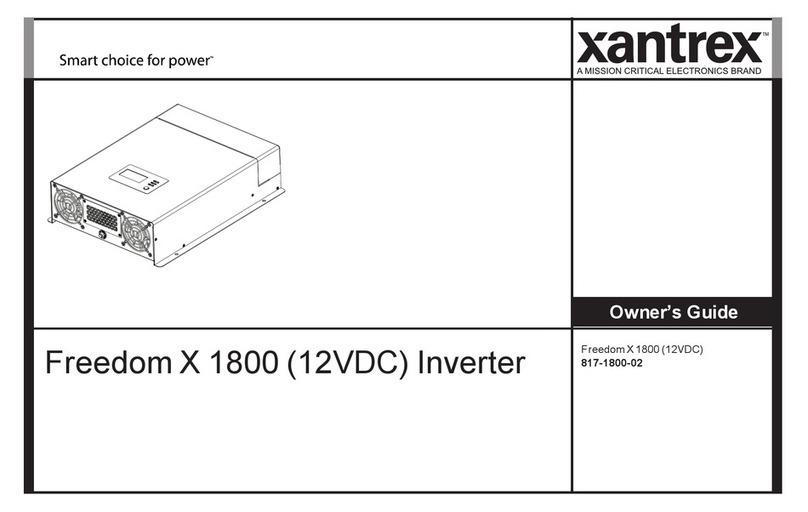
Mission Critical
Mission Critical Xantrex Freedom X 1800 owner's manual
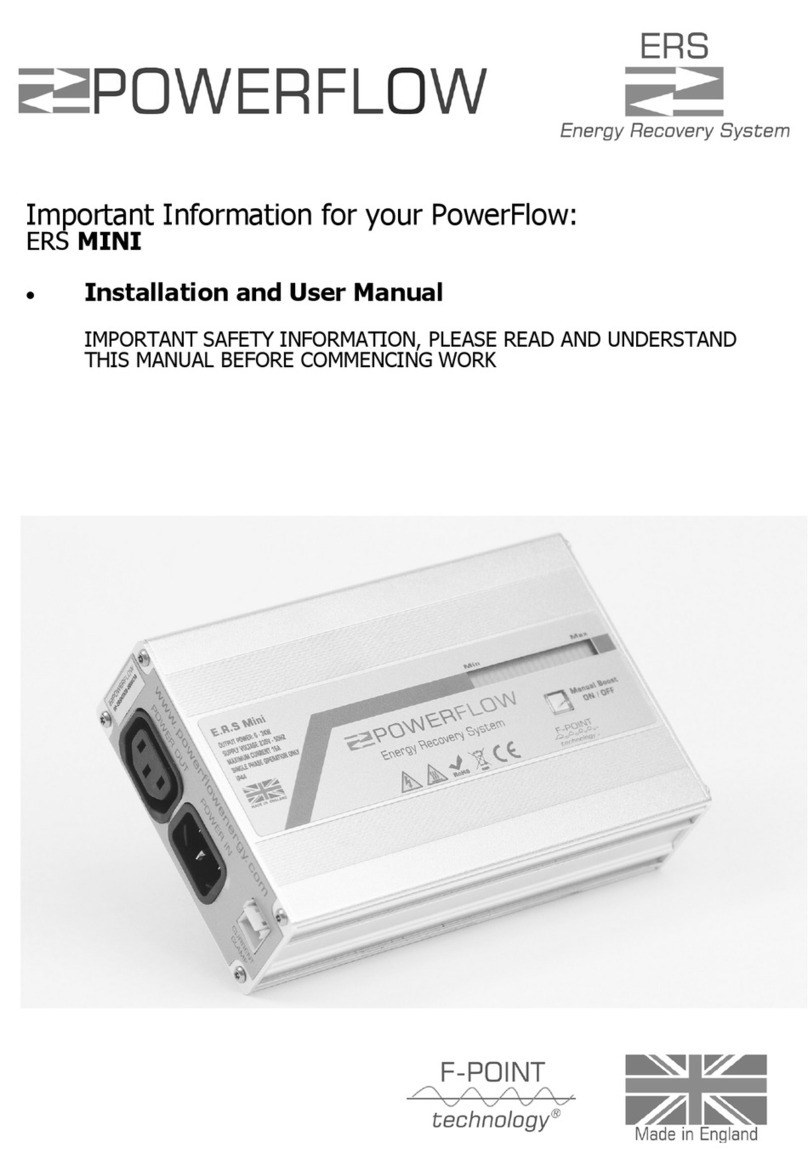
PowerFlow
PowerFlow ERS MINI Installation and user manual
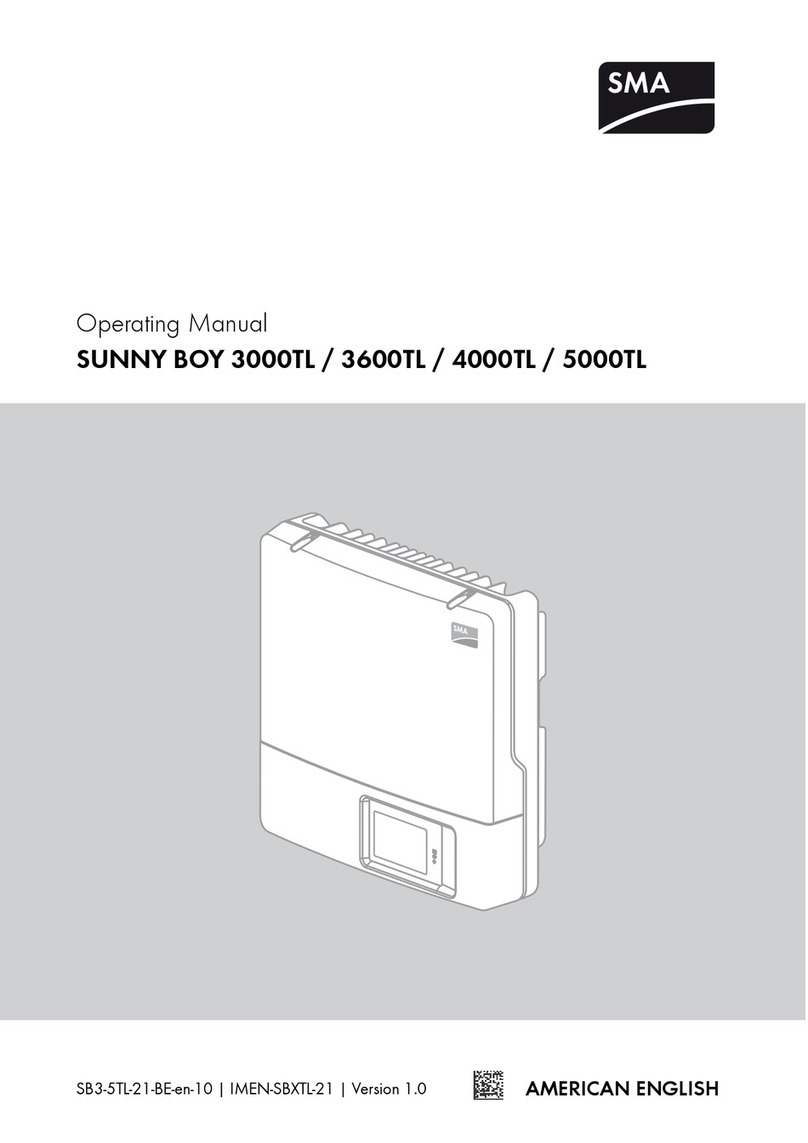
SMA
SMA SUNNY BOY 3600TL operating manual

Sygonix
Sygonix 2813285 operating instructions

Fuji Electric
Fuji Electric Frenic instruction manual
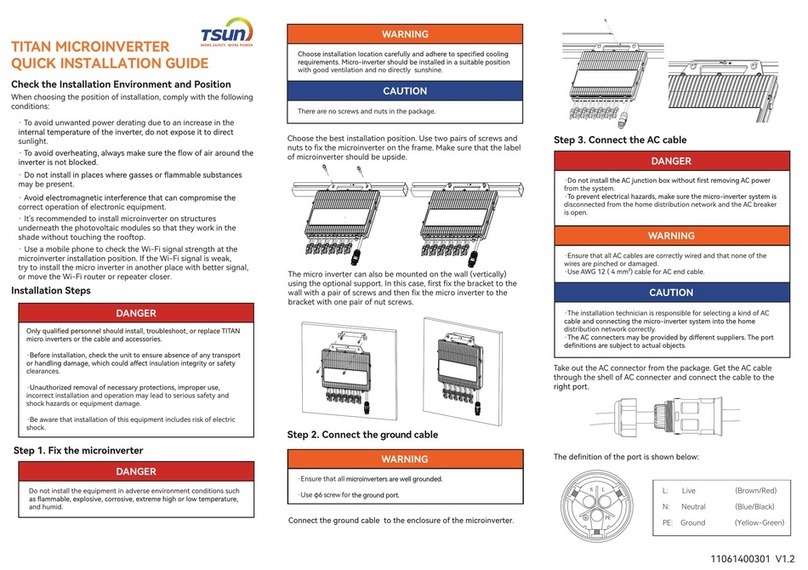
Tsun
Tsun TITAN TSOL-MP3000 Quick installation guide
